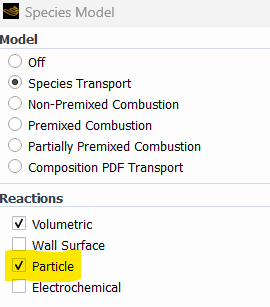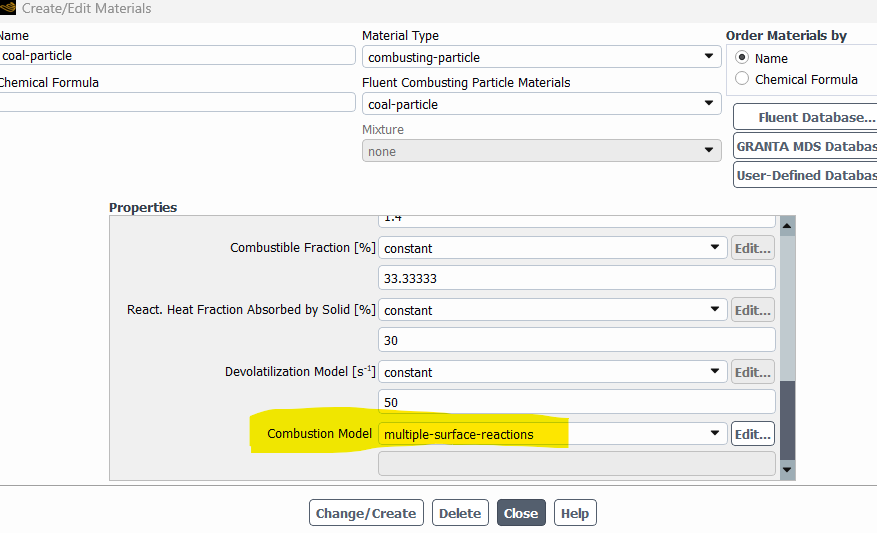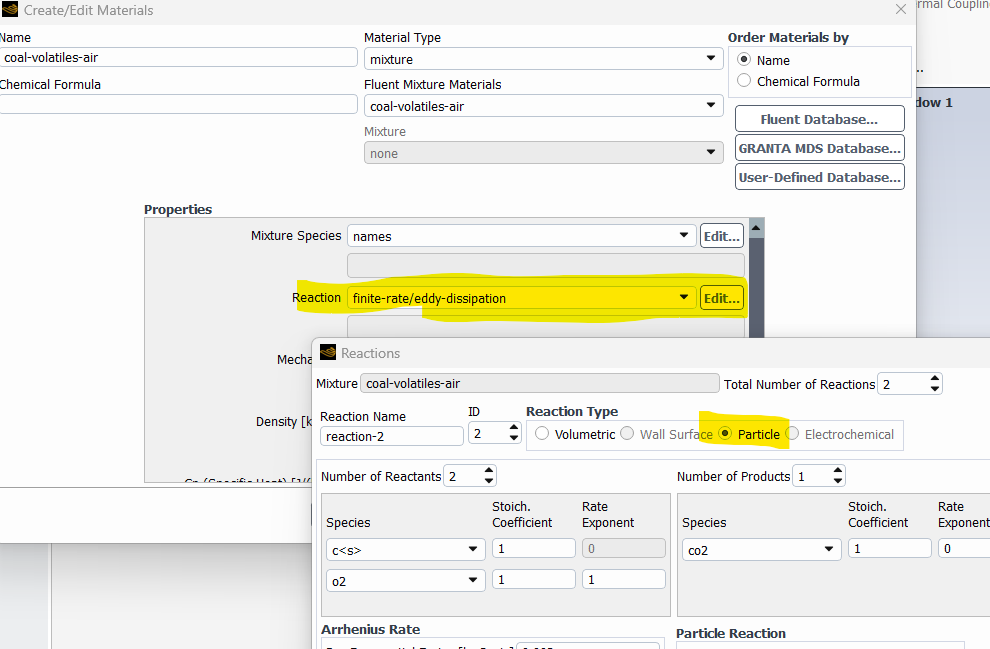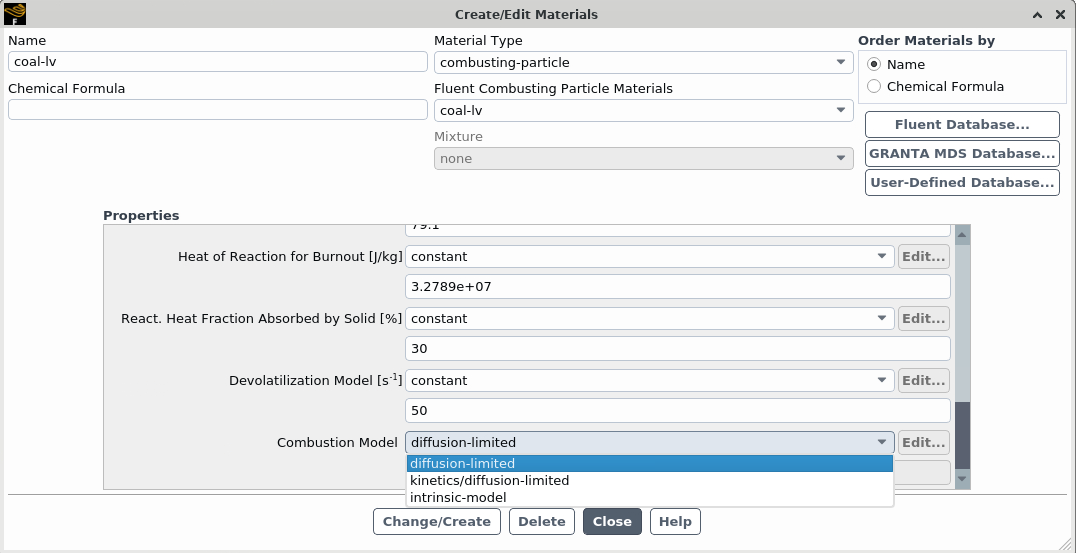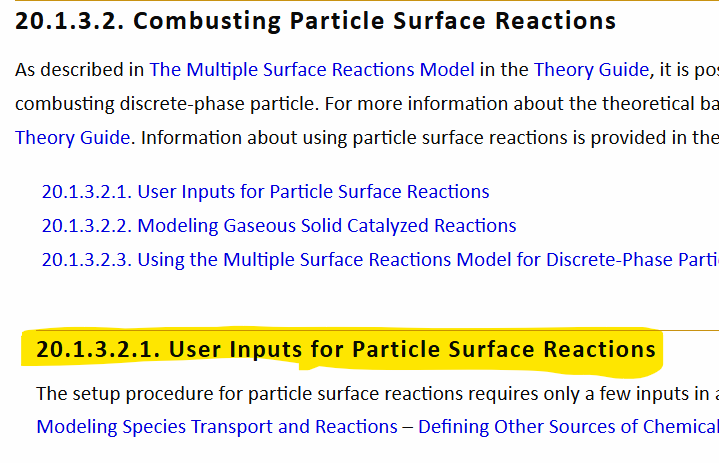TAGGED: discrete-phase, discrete-phase-model, dpm-injection, dpm-model, dpm-udfs, fluent
-
-
October 14, 2025 at 4:15 pm
aryal3
SubscriberI’m trying to simulate the oxidation reaction of solid carbon particles with FeO in a molten steel bath using the Discrete Phase Model (DPM) in ANSYS Fluent. However, there doesn’t seem to be a built-in option for this type of reaction in the default DPM settings.
I tried using the Combusting Particle model by defining: C as the combustible species, FeO as the oxidizing species, and Fe as the product species.
However, the simulation doesn’t perform as expected. The reaction doesn’t seem to occur correctly, and the results are not correct.
How to model heterogeneous solid–liquid reactions like C + FeO → Fe + CO using DPM in Fluent? Would this require a user-defined function (UDF) or a modification of the existing DPM reaction framework?
Any suggestions or examples would be greatly appreciated.
-
October 15, 2025 at 9:32 am
Ren
Ansys EmployeeThe combusting particle model was originally designed for coal combustion but I think the particle surface reaction model could work for your application. There are four main settings related to this model:
1.Activate the particle reaction option in the "Species Model" dialog box.
2. Select "multiple-surface-reactions" combustion model for the combusting particle:
3. Define the particle reaction in the mixture material, e.g.,
4. Define the particle composition in the injection input.
Please refer to the user guide for more details.
-
October 15, 2025 at 9:33 pm
-
October 16, 2025 at 1:05 pm
Ren
Ansys Employee- you need to define a particle reaction first, then the option "multiple-combustion-reactions" will appear. Sorry for the confusion in my previous message. They were meant to be key settings but not in any particular order. Anyway, the correct order is #1, #3, #2, #4 (i.e., swap the ordrer of points #2 & #3).
- The solid species is actually the fluid material type, not the solid material type.
Please refer to the user guide for more details. For 2025R2 this is in section:
-
October 16, 2025 at 7:32 pm
aryal3
SubscriberI’m actually using Eulerian–Eulerian multiphase model for this case.
Can I define a mixture where one of the species is represented by a discrete (combusting particle) phase? This would be necessary for the C (s) + FeO (l) → Fe (l) + CO (g) reaction to work, since carbon is in the solid phase.
Also, how should I handle the phases of the reactants and products?
- Can the oxidizing species FeO be in the liquid phase (molten steel)?
- Can the product Fe remain in the liquid phase while CO appears in the gas phase?I’m trying to confirm whether Fluent can couple these across different phases in the Eulerian–Eulerian framework, or if the reaction definition requires them to belong to the same continuous mixture phase.
-
October 17, 2025 at 9:02 am
Rob
Forum ModeratorEulerian and DPM are different models. If you want to model the reactions in the Eulerian multiphase framework you will need a mix of species and phase interactions. The former to handle within phase chemistry and the latter for melting/reactions between phases. Don't forget the head space - is that air, nitrogen plus CO2 or all CO2?
-
October 17, 2025 at 7:13 pm
aryal3
SubscriberThanks for the reply.
Just to confirm my setup: I’m currently using the Eulerian–Eulerian multiphase model for the liquid steel and the gas phase reacting with it, while injecting solid carbon particles as a discrete phase (DPM). Headspace is O2 and CO, and it’s also present as dissolved species in the molten steel.
My goal is to model the surface reaction between the injected carbon particles and the FeO in the molten steel bath:
C(s, DPM) + FeO(l) → Fe(l) + CO(g)
Can a DPM particle surface reaction in Fluent interact with both Eulerian phases (liquid and gas), for example, consuming FeO from the liquid and releasing CO to the gas phase, or does it only exchange mass and species with a single continuous mixture (the primary phase)? If it’s limited to one continuous phase, what’s the usual workaround for transferring CO from the liquid to the gas, through mass transfer or a UDF?
-
- You must be logged in to reply to this topic.


- air flow in and out of computer case
- Varying Bond model parameters to mimic soil particle cohesion/stiction
- Eroded Mass due to Erosion of Soil Particles by Fluids
- I am doing a corona simulation. But particles are not spreading.
- Centrifugal Fan Analysis for Determination of Characteristic Curve
- Guidance needed for Conjugate Heat Transfer Analysis for a 3s3p Li-ion Battery
- Issue to compile a UDF in ANSYS Fluent
- JACOBI Convergence Issue in ANSYS AQWA
- affinity not set
- Resuming SAG Mill Simulation with New Particle Batch in Rocky

-
4102
-
1487
-
1318
-
1156
-
1021

© 2025 Copyright ANSYS, Inc. All rights reserved.

